Tibet
Tibet spans the world's largest and, with average heights of over 4,000 m, also the world's highest plateau. The Tibetan Plateau also spans most Qinghai, western Sichuan provice, northern Yunnan, and lastly southwestern Gansu. Consequently, Tibet is often referred to as the "Roof of the World". Parts of the region (northwestern region) are so remote they remain uninhabited to this day.
Often referred to as the top of the world, Tibet is a land of mysterious beauty. It is known for its amazing culture and incredibly warm and friendly people. Due to the difficulty of reaching Tibet in the past, its culture grew independent from outside sources and over centuries developed into one of the most beautiful and enchanting on earth.
Tibet is an extraordinary destination. A Tibet Tour is one that will never be forgotten. Tibet is rich in both religious and natural sites. Throughout Tibet there are ancient palaces, temples, monasteries, and lamaseries which are beautifully designed and painted. The Potala Palace, located in the center of Lhasa City, the capital of Tibet is known throughout the world for its imposing design and treasures located inside, where is hallowed by khatag, Buddhist devotees and scholars.
It is also blessed with an incredible topography dotted with numerous rivers, lakes, prairies, valleys, forests, and stunning snowcapped mountains and offers both imposing and beautiful views of the incredible natural wonders.
The people of Tibet are famous for their warmth and hospitality. They welcome all visitors and are more than happy to invite visitors to dinner. Their houses are extremely beautiful and an evening spent with aTibetan family is an unforgettable experience. Travel to Tibet to learn about the Tibetan way of life, culture, food, history, religions and the artistic buildings and monuments, you can admire the cloud-kissing Himalayas, watch sunrise at the Mt. Everest Base Camp, view the deepest canyon in the world by a cruise ship, and find the interesting facts about Tibet. In almost any corner of Tibet, you can enjoy wondrous experiences.
16-day Xinjiang Gansu Yunnan Sichuan Tibet Tour
Urumqi → Turpan → Dunhuang → Jiayuguan → Lanzhou → Xian → Kunming → Dali → Lijiang → Lhasa → Emeishan → Leshan → Chengdu16-day Xinjiang Gansu Yunnan Sichuan Tibet Tour tour to visit Urumqi, Turpan, Dunhuang, Jiayuguan, Lanzhou, Xi'an Kunming, Dali, Lijiang, Lhasa, Leshan, Chengdu in Northwest and Southwest China and more....
17-day China Sichuan Tibet Memory Tour
Shanghai → Guilin → Yangshuo → Chengdu → Lhasa → Xian → Pingyao → BeijingThis 17 days China memory tour package for visitor lifetime joy to see the Bund Shanghai, Guilin Li river, Chengdu Panda, Xian Terra Cotta Army Warriors, Lhasa Potala Palace, Pingyao Ancient City,Beijing Great Wall and more
15-day China Tibet Impression Tour
Shanghai → Guilin → Yangshuo → Chengdu → Lhasa → Xian → BeijingThe impression China tour package covers the Bund Shanghai, Guilin Yangshuo Li River cruise, Chengdu Panda Base, Lhasa Potala Palace, Xian Terracotta Army Warriors, Beijing Great Wall and more top China sights.
14-day Sichuan Chengdu Tibet Xian Guilin Shanghai Tour
Chengdu → Tibet → Lhasa → Xian → Guilin → Shanghai14-day Sichuan Chengdu Tibet Lhasa Xian Guilin Shanghai Tour covers Chenddu Panda Center, Leshan Buddha, Li River Cruise Guilin to Yangshuo, Potala Palace, and more popular attractions
20-day Shanghai Xian Tibet Chengdu Yunnan Guilin Hong Kong Tour
Shanghai → Xian → Tibet → Chengdu → Yunnan → Hong Kong → Guilin20-day Shanghai Xian Tibet Chengdu Yunnan Guilin Hong Kong Tour covers the Bund, Terracotta Warriors, Potala Palace, Giant Panda Center, Lijiang Old Town, Li Cruise and more popular attractions....
Tibet Museum
The Tibet Museum is located in the southeast corner of the Norbu Lingka Park, Lhasa City. Covering an area of 53,959 square meters, the museum houses numerous collections of Buddhist sculptures, paintings, jade wares, and ritual objects.
Tashilumpo Monastery
The Tashilumpo (Tashilhunpo) Monastery, literally known as "Auspicious Sumeru Temple", is the largest temple in the town of Shigatse. It is the traditional seat of successive Panchen Lamas, and the second highest ranking tulku lineage in the Gelug (Gelugpa) Tibetan Buddhism hierarchy after Dalai Lama.
Yangpachen Spring
Yangpachen (Yangbajing), 110 kilometers north of Lhasa, is famous for its hot springs. It is said that a long time ago, before the sky and the earth were separated, the whole world was in total darkness. People living at the foot of Mt. Nyainqentanglha were suffering.
Zhigongti Temple
Zhigongti Temple is located in Mozhugongka County, about 150 km from Lhasa, the capital city of Tibet. Built by Zhigongpa Renchinbai in 1179, it serves as the center temple of Zhigong Kagyu (White hat) sect.
Jokhang Temple
Jokhang Temple, located on Barkhor Square in the center of Lhasa is the most important temple in Tibet. The temple architecture blends Indian, Chinese, Tibetan, and Nepalese styles.
Barkhor Street
Lhasa Barkhor Street is square and encircles the Jokhang Temple. The street was originally a path formed by the thousands of pilgrims walking clockwise around the temple spinning their prayer wheels.
Drepung Monastery
The largest Tibetan monastery, Lhasa Drepung Monastery is one of the three Tibetan Buddhist Gelugpa university Monasteries, with the others being the Ganden and Sera Monasteries.
Namtso Lake
Tibet Namatso Lake is located 112 kms northwest of Lhasa, whose name means ‘heavenly lake’. Here are the map, altitude, photo, road, birds and more of Namtso Lake.
Ramoche Temple
Ramoche Temple (Xiao Zhao Si, or Ramoche Monastery) is situated in the northwest of Lhasa, covering a total area of 4,000 square meters. This temple is one of the important cultural relic protection sites of the Tibet Autonomous Region as well as a hot attraction in Lhasa.
Norbulingka
Lhasa Norbulingka Park is the largest man-made garden as the summer getaway of the Dalai Lamas for centuries, from the late 18th century up until 1959 in Tibet. The park is a favorite picnic spot for locals and many festivals and dances are held there.
Potala Palace
The symbol of Tibet, the Potala Palace sits in the center of Lhasa City on top of Marpo Ri (Red Mountain) and it was named after Potalaka Mountain, the mytholical abode of Avalokitesvara, a Bodhisattva who embodies the compassion of all Buddhas.
Sera Monastery
Located at the foot of Tatipu Hill in the northern suburbs of Lhasa City, the Sera Monastery is one of the three great Gelukpa university monasteries, the others being the Ganden Monastery and the Drepung Monastery.
Mt. Everest Base Camp
Two base camps are located on opposite sides of Mt. Everest (Everest Mountain): to the South in Nepal, and to the North in Tibet, China. Located at the altitude of 5,360 m/17,600 ft is South Base Camp in Nepal, and at 5,208 m/17,090 ft is the North Base Camp in Tibet.
Xin Ding Hotel
Opened in 2007, the Xinding Hotel is located at in the prosperous golden district and the amusement center area of Lhasa, the sun islands. It is only 5-minute' drive to the Potala Palace and just 10-minute' walk to the Jokhang Temple and the Barkhor Market. The Xinding Hotel has 132 guest rooms, including standard room,deluxe view twin room, superior deluxe suite and so on. As for dining service, the hotel has Chinese and Western restaurants and bar. For recreation and relaxation, there are chess and card room and massage room. Besides, the Xinding Hotel is also equipped with business centre, conference room, ticket booking,laundry service and so on.
St.Regis Resort - Lhasa
As the first international luxury brand hotel in Tibet, The St. Regis Lhasa Resort located on Jiangsu Road and situated in the famous ancient Barkhor area, in the heart of the Tibet Himalayan highlands. It features 150 beautifully adorned oversized rooms and villas and 12 suites including the Presidential Suite. The iconic St. Regis butler service will provide ever-present, yet unobtrusive round the clock service while anticipating guests needs and customizing each guest's stay according to his or her specific tastes and preferences. Opened in 2010, the hotel’s 5-story main building and 6-story annex feature stunning architecture and 162 guest rooms and suites, equipped with LCD televisions, high-speed Internet, refrigerators, mini-bars, coffee/tea makers, climate control, direct-dial telephones with voice mail, in-room safes and complimentary bottled water. Bathrooms include rainforest showers, deep bathtubs, bathrobes, toiletries, phones and hair dryers. Non-smoking rooms, wake-up calls and 24-hour room service are available. The hotel property features an indoor swimming pool, exercise facility, spa center, massage service, western and Asian restaurants, a bar and lounge, tea house, concierge service, currency exchange, tour assistance, ticket service, safe-deposit boxes, limousine rental service, babysitting service, shoe shine and medical assistance on call. Conference facilities include a ballroom, meeting rooms and a business center.
Lhasa Saint Hotel
Located in the financial and commercial central area, it enjoys convenient transportation with 4 km the to International Convention and Exhibition Center, 30 minutes’ drive to the airport and walking distance to the famous Chunxi Road. The hotel specially prepares 188 warm and elegant rooms with complete facilities for guests home and abroad. 5 different sized meeting rooms are ready for business guests to hold seminar, have review meeting, and do training session. 3 Restaurants can accommodate 300 enjoying meals together. Besides, the hotel also offers ticketing service, parking square and business center for guests. They can also enjoy themselves in the KTV, Chess and Card Room. Together with the best service, you will definitely feel at home when staying here.
Manasarova hotel
With views of Potala Palace and Lhasa River, Lhasa Manasarover Hotel is just 5-min-drive to Jokhang Temple.All 150 guest rooms and suites are equipped with LCD TV, 24hr free internet access, and so on.The hotel features restaurant, café, KTV, chess, mahjong, sauna, massage, fitness and conference halls.
Four Points By Sheraton Lhasa Hotel
It is located in the east suburb of Lhasa City, backing on the Lhasa River and facing to the Jiangsu Road. The prior location blesses the hotel with convenient transportation. It will take you only 10 minutes walking to the holy Jokhang Temple and the prosperous Barkhor Street. The magnificent Potala Palace could also be arrived in 10 minutes by car. As for the hotel, it is a perfect combination of Starwood theme culture and traditional Southeast-Asian courtyard decorative style. It absolutely is the best choice for living when you in Lhasa both for traveling and business. The well-equipped guest rooms are comfortable and fashion. Every room has a 32 inch LCD TV, which could access to satellite and cable TV programs. It also has free internet access, safe box, tea/coffee brewing equipment, 2 telephones, and provides international call and personal message service, space type shower room. There are non-smoking floors and special rooms for handicapped. In addition, the hotel provides humidifier and oxygen for guests visiting the plateau.
Jardin Secret Hotel
Lhasa's Jardin Secret Hotel (Lasa Yatingsheli Huayuan Jiudian) is located about 5 kilometers from the Potala Palace, a ten-minute drive from Norbulingka (the Garden of Treasures), and also close to the Tibetan Museum and Lhasa Railway Station. This Lhasa hotel features a Tibetan style decoration and offers a variety of well-equipped rooms
Lhasa Goden Tibet Holiday Hotel
Established in July, 2007, the 3-storey hotel is located at West Jinzhu Road, near to Shidai plaza. It is about 8-min-drive to Luobulinka and Budalagong. There are 57 guestrooms and suites in the hotel. Jinzang restaurant in the hotel can hold over 200 persons at the same time. In addition, tea house, café, billiards, broadband internet, shopping and medical care are all available in the hotel.
Lhasa Hotel
Established in 1985 and renovated in 1998, the Lhasa Hotel is close to the Potala Palace, a 10-minute drive to the center of Lhasa, and 90-minute drive to the airport. The hotel holds 458 guest rooms, along with a gym, karaoke facilties, Western, Chinese and Tibetan restaurants, and a beauty salon. The area of a standard room measures 20.4 square meters, and an extra bed charges RMB220 per night.
Transportation in Tibet
Lhasa is the transportation hub of Tibet. Because of the geographical remoteness, access to Lhasa and other districts of Tibet used to be difficult, and was limited to infrequent air services and arduous road trips.
Food & Cuisine in Tibet
Tibetan food is not only sustenance, but also helps Tibetan people survive the harsh climates. Their food keeps them warm, gives them energy, helps them with the high altitude, and gives them nutrients essential to the harsh climate.
Tibet Travel Permits
Different from those who visit other tourist destinations of China, except the Chinese visas, the travelers who visit Tibet need to obtain the special Travel Permits issued by Tibet Tourism Bureau or other authorities before entry.
Tibet Shopping
Tibet is unlike any other place on earth. The culture, people, and natural beauty of the 'top of the world', offers a truly unforgettable experience for visitors who never leave without purchasing some of the traditional Tibetan works of arts and crafts.
Tibet Weather
Located in a subtropical highland climate, Yunnan has some of the mildest climates in China. It has short cool dry winters and warm humid summers. The weather never gets very hot in the s
Things To Do In Tibet
Tibet is a truly amazing place. It is mysterious and breathtaking, filled with history and culture. It is a trip one will never forget. There are so many things to do in Tibet that cannot be experienced anywhere else in the world.
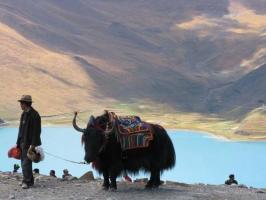 Tibetan Ethnic Flavor
Tibetan Ethnic Flavor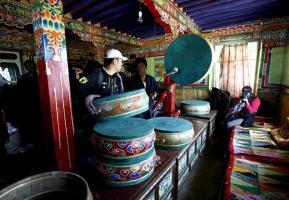 Tibet Drums
Tibet Drums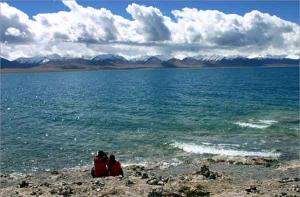 Nyainqentanglha Mountain
Nyainqentanglha Mountain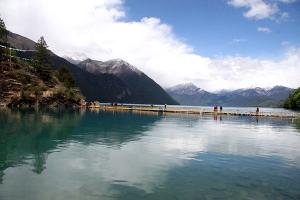 Shannan Yamzho Lake
Shannan Yamzho Lake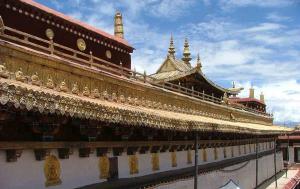 Jokhang Temple
Jokhang Temple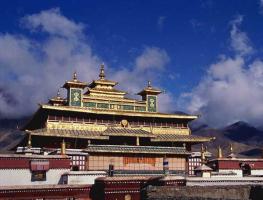 Shannan Samye Monastery
Shannan Samye Monastery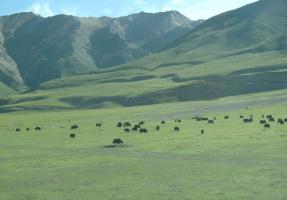 Chiangtang Plateau Grassland
Chiangtang Plateau Grassland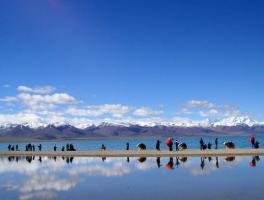 Lake Namco
Lake Namco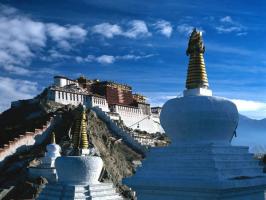 Potala Palace
Potala Palace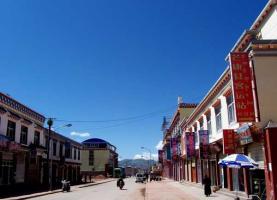 Qamdo Mangkang
Qamdo Mangkang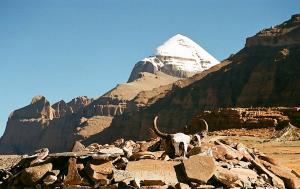 Ali Gangriboche Mountain
Ali Gangriboche Mountain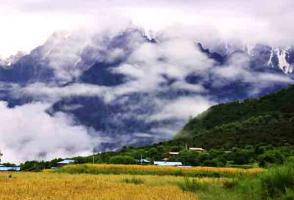 Yarlung Zangbo Grand Canyon
Yarlung Zangbo Grand Canyon.jpg) Yumbulagang Palace
Yumbulagang Palace.jpg) Tangka
Tangka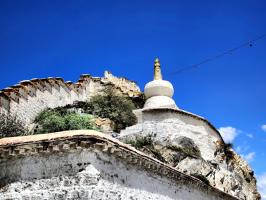 Yaowang Mountain
Yaowang Mountain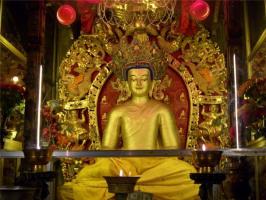 Ramoche Monastery
Ramoche Monastery.jpg) Sangmu Village
Sangmu Village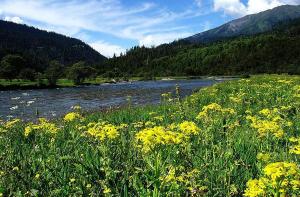 Linzhi Lulang
Linzhi Lulang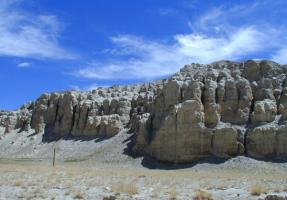 Ali Zada Earth Forest
Ali Zada Earth Forest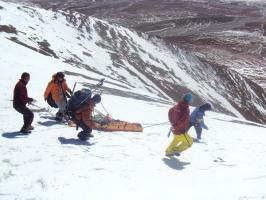 Mount Everest-Qomolangma
Mount Everest-Qomolangma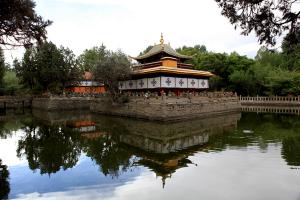 Lhasa Norbulingka
Lhasa Norbulingka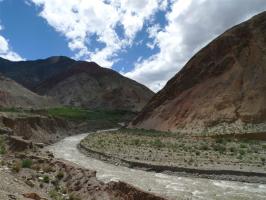 Qamdo Baxoi
Qamdo Baxoi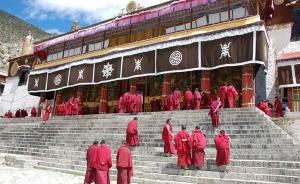 Drepung Monastery
Drepung Monastery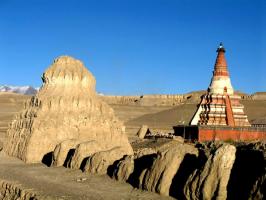 Ali Guge Kingdom Ruins
Ali Guge Kingdom Ruins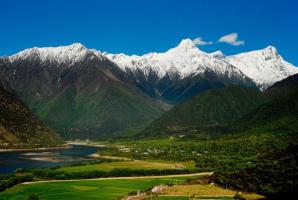 Namjagbarwa Mountain
Namjagbarwa Mountain.jpg) Mastiff Dogs
Mastiff Dogs.jpg) Shoton Festival
Shoton Festival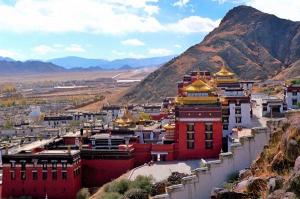 Tashilhunpo Monastery
Tashilhunpo Monastery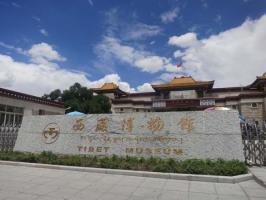 Tibet Museum
Tibet Museum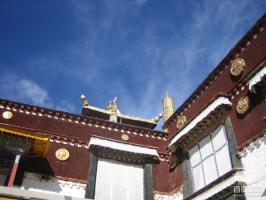 Sera Monastery
Sera Monastery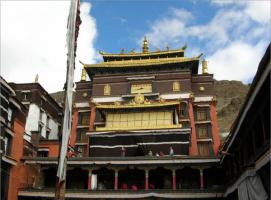 Gandan Temple
Gandan Temple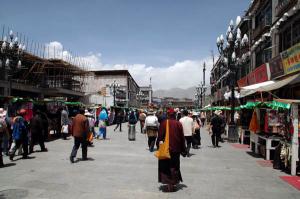 Lhasa Barkhor Street
Lhasa Barkhor Street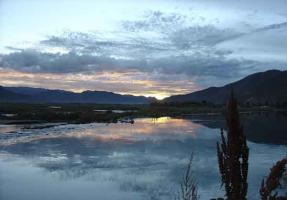 Lhasa River
Lhasa River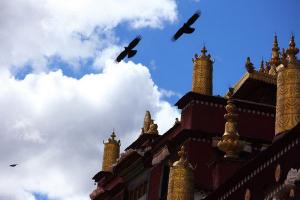 Zhigongti Temple
Zhigongti Temple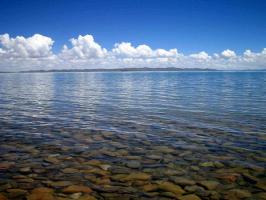 Ali Lake Manasarovar
Ali Lake Manasarovar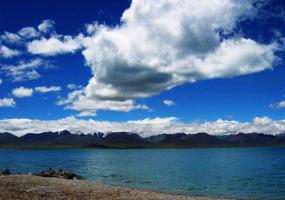 Yangbajain Spring
Yangbajain SpringTibetan Monks and Lamas
Religious life in Tibet revolves around monks and monasteries. The Tibetan word for monk, "trapa," is used to refer three main sorts of monastery residents: students (monks), and scholars and teachers (lamas).
Tibetan New Year Losar
The celebration of Losar (Tibetan New Year) predates Buddhism in Tibet and can be traced back to the pre-Buddhist period for early tradition that every winter a spiritual ceremony was held, in which people offered large quantities of incense to appease the local spirits, deities and 'protectors'.
Tibetan Thangka Paintings
A thangka, also known as tangka, thanka or tanka is a painting on silk with embroidery, usually depicting a Buddhist deity, scene, or mandala of some sort. The thankga is not a flat creation like an oil painting or acrylic painting but by a picture panel painted or embroidered over a textile.
Tibetan Khata & Butter Tea
Butter tea, also known as Po Cha or Goor Goor in local Ladakhi terms, is a drink of the Tibetans and some other ethnic groups in southwestern China. and The Tibetans commonly give a kind acknowledgment of "Tashi Delek" (meaning good luck) at the time of presenting.
Shoton Festival
The Shoton Festival, widely known as the Yogurt Festival or Banquet, is an annual festival held at Norbulingka or "Jewel Park" palace in Lhasa, Tibet. Shoton is a transliteration of two words in the Tibetan language which means "the Yoghurt (Sho) Banquet (Ton)".
Tibetan Drums
Among the Tibetan people, drums are an important part of the accompaniment for religious and social dances and for dances by special performers. In the Qinghai-Tibet plateau region, large cylindrical drums with cowhide heads, low and resonant in tone, were once an important part of the ceremonial equipment of every monastery.
Religions Of Tibet
The Religion in Tibet has made a great effect on the history, culture and life of Tibetan people for thousands of years. Almost people are faithful to it. Religion is very important to the Tibetans with everything being centered around it.
Tibetan Funeral & Burial Ritual
The Tibetan funeral customs have been greatly influenced by Tibetan Buddhism and Bon Religion. Generally, funeral rituals practiced in Tibet are stupa burial, sky burial(celestial burial), fire burial (cremation ), water burial, earth burial and tree burial.
Tibetan Opera & Drama
The Tibetan opera is one of the oldest drama forms among China's minority nationalities. For hundred of years it has been performed in Tibet as well as in Sichuan, Qinghai, Gansu and Yunnan provinces.
Tibetan Folk Songs & Dance
The tunes of the Tibetan folk songs are strong or weak, long or short, and the chorus singers join the lead singer in various numbers and at different times. Chinese folk music is usually composed of five, six or seven-note scales.
Tibetan Mastiff Dogs
The Tibetan Mastiff is an ancient breed and type of domestic dog originating with nomadic cultures of Indian state of Himachal Pradesh, Uttarakhand, Tibet and Central Asia.

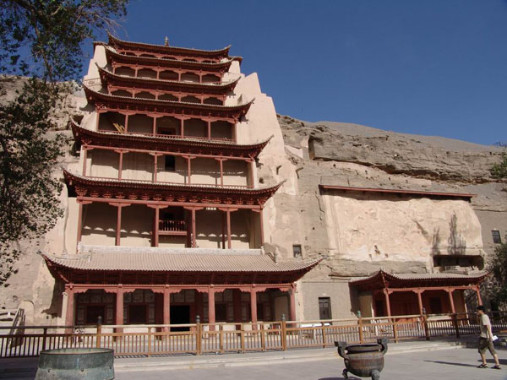
.jpg)
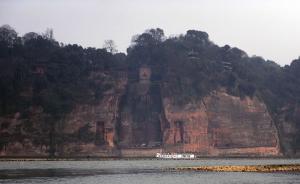
.jpg)
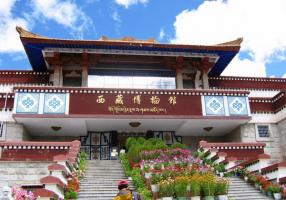
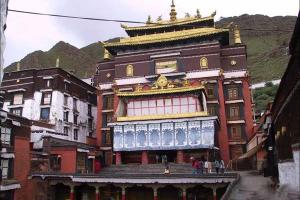
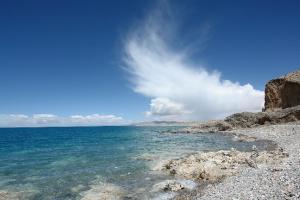
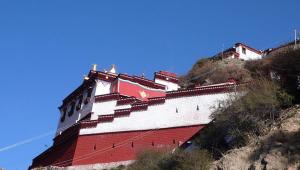
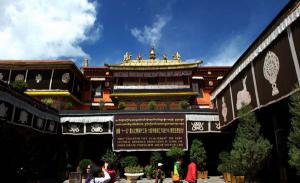
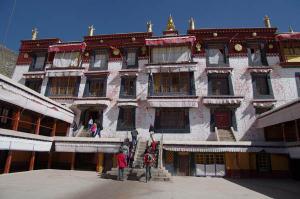
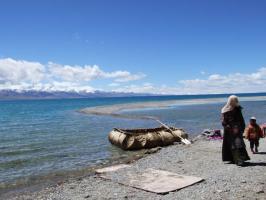
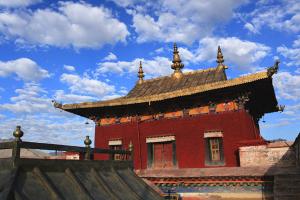
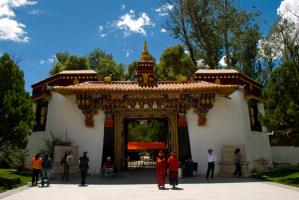
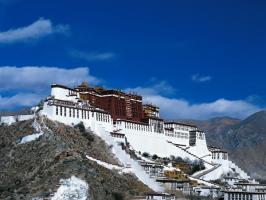
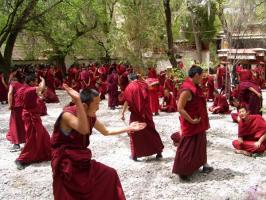
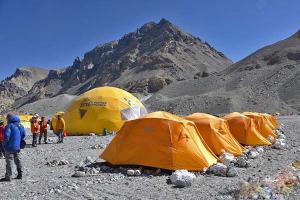
.jpg)
.jpg)
.jpg)
.jpg)
.jpg)
.jpg)
.jpg)
.jpg)


